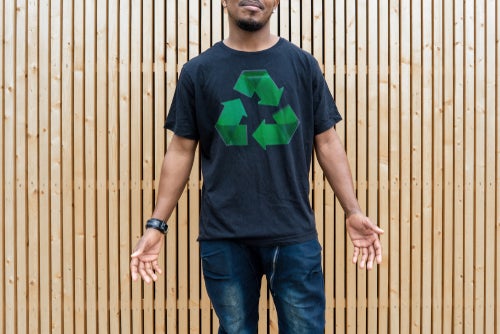
The ‘Closing the loop: Increasing fashion circularity in California’ report, which was developed with fashion brands Allbirds, Gap Inc., Patagonia, and waste management company WM, focused on closed-loop apparel recycling in the US state of California but the findings were also scaled up to estimate the benefits of the system being carried out across the US.
The aim of the research was to understand what effort building a closed-loop system in California would require, what stakeholders would need to participate, and what initial impact the effort could have.

Discover B2B Marketing That Performs
Combine business intelligence and editorial excellence to reach engaged professionals across 36 leading media platforms.
The researchers found a fully closed-loop apparel-recycling system in California could potentially achieve a total holistic impact based on economic, environmental, and social benefits of between US$7bn and $9bn a year. This was based on the researchers’ estimate of a total holistic impact being approximately $3.5bn to $4.5bn from the closed-loop recycling of polyester. The report explains this represents nearly half of apparel textile fibres thrown away by Californians and translates into a holistic impact of $2.70 for every $1 spent.
The report highlights that Californians bought and wore 510,000-530,000 tonnes of clothing in 2020 and almost all of it (500,000) is expected to end up in landfill and 97% of it was made from virgin materials.
The report suggests circularity is the answer – more specifically creating a closed loop for recycling materials back into the manufacturing process to reduce waste and the reliance on using up more natural resources.
Closed-loop apparel recycling in California has not received much investment or research so far, according to the report, however a consumer survey found 92% of Californians would take part in a brand-sponsored apparel recycling programme, if it was available.

US Tariffs are shifting - will you react or anticipate?
Don’t let policy changes catch you off guard. Stay proactive with real-time data and expert analysis.
By GlobalDataThe survey also revealed 18-24 year-olds would be willing to pay a premium of almost 15% for clothes made from recycled materials.
The authors of the report, McKinsey & Company’s senior partner Danielle Bozarth and partners Steve Hoffman and Giulia Siccardo identified eight core initiatives that could advance fashion circularity in California for items made from 100% or blended polyester.
The authors explain future efforts could build on these initiatives to address other textile materials:
- Purchase recycled polyester to replace virgin polyester in apparel, probably at a premium, but
with few other switching costs involved. - Promote and sell recycled apparel to shoppers, touting clothing “made with recycled polyester”.
- Partner with apparel manufacturers to collect pre-consumer polyester waste, such as scraps and rejected apparel that manufacturers discard.
- Partner with retail stores to collect pre-consumer polyester waste, such as unsold garments that are typically thrown away if not diverted for low-cost resale or donation to employees.
- Partner with existing collectors, such as donation or consignment stores, to divert post-consumer polyester waste that would otherwise be downcycled or sent abroad.
- Introduce and scale curbside textile collection in Los Angeles, San Francisco, and select Bay Area counties because the high cost of curbside collection makes it most viable in densely populated metropolitan areas.
- Build a highly automated facility to sort and deconstruct polyester textiles because the inability of recycling processes to handle more than one type of textile waste and the potential for unsorted waste to introduce contamination make sorting necessary.
- Build a chemical recycling facility to process polyester textiles because chemical recycling is critical to sustaining the quality of textile fibre over many iterations
The authors also point out however, that any effort to build closed-loop recycled systems has to deal with the disconnect between supply of and the demand for recycled materials.
The report explains: “Unlocking the total holistic impact will require actions to level the playing field, such as forging public-private partnerships, enacting recycling-friendly policies, and encouraging vertical integration in the apparel industry.”
It adds: “The California apparel industry can start building closed-loop recycling capacity today to reduce waste and reliance on limited natural resources….We hope this report can serve as the foundation for further research and action across other materials and geographies, catalysing even more positive economic, environmental, and social benefits.”





